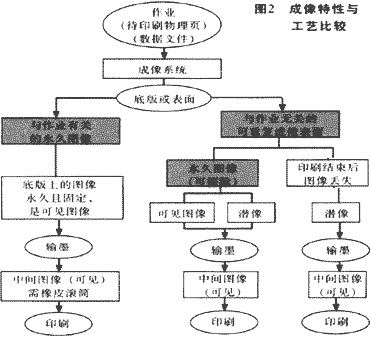One-time image plate and repetitive image plate process comparison two
FIG. 2 represents and compares the process and workflow differences of the three recording media, the primary imaging plate, the reproducible imaging plate, and the imaging surface, from the other side. This comparison is related to the early use of technology and is also related to the concept of direct imaging technology for the first reusable printing plate in the field. On the one hand, the image carrier (print plate) has the basic features of permanently storing the printed image; on the other hand, the image on the reproducible image plate is erasable, ie the surface of this plate has a variable storage capacity.


Table 1 lists several examples of repetitive imaging plates so that they can be related to the latent images appearing in Fig. 2 to show that the imaging results of the reimageable plate material depend on the material properties, some visible (plate material) The imaging results are similar to those of other CTP plates, and some are latent images (the plate material is similar to the photoconductor used in the electrostatic imaging process). Non-impact printing imaging results must be some form of latent image, such as electrostatic latent images, magnetic latent images, and ion latent images, etc. Its important feature is that the page content is variable, thus enabling variable data printing.
(to be continued)Bread Maker,Bakery Equipment,Kitchen Equipment
Barbecue Co., Ltd. , http://www.nselectricalappliances.com